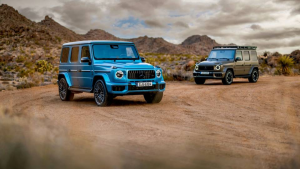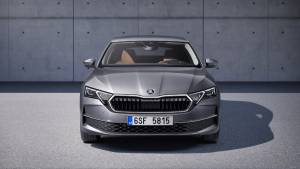Blue streak
Team OD
Updated: July 25, 2013, 12:12 PM IST
Setubal in Portugal has an incredibly scenic road dissecting the Atlantic on one side and sharp sandstone cliffs of the Portuguese coast on the other. It stretches for over 50 kilometres weaving in smooth gentle flowing corners, crests and ludicrously fast straights into one of the most memorable drives in the world. So on every occasion that I've traveled to Portugal I've found myself wanting more of the same like a kid biting into his first chocolate bar.
A week ago I was back in Portugal disembarking at Faro a sunny seaside resort in the south of Portugal for yet another drive. It wasn't as scenic as Setubal I admit, but the XKR-S howling though the Algarve region can very easily make any road seem memorable. Yet I'm not here to drive the XKR-S on the road alone there's also a track involved, it's the Portimao circuit and it's one of the most technical circuits in the world. The undulations here are severe and the changes in inclination intense. The 4.6km track climbs, drops and turns in quicker than a roller coaster. It's a track that severely challenges the dynamics of any car and is often used as a testing ground for F1 and MotoGP teams. So that makes an interesting test for the XKR-S.
Now Jaguar's XKR-S is a tuned version of a tuned version of the XK coupe. The basic design is still the same, dominated by an evocative shape inspired by the flowing lines of the E-Type, a car so beautiful famed designer Ralph Lauren went cuckoo and paid a fortune to acquire one (the E-type that is). But the XKR-S is also very special as it is Jaguar's most powerful roadster, a headline grabbing offshoot of one of their best selling roadsters ever.
So is the XKR-S any different to look at? Well you can see the XK family lines, yet you couldn't mistake this for anything but a very unique and individual car. The pontoon like front fenders stretch out forever and where the original had this lilting oval grille future generations have undergone several changes especially around the bumpers to make it look more contemporary. In the case of the XKR-S that front grille has metamorphosed into a shape that's a lot stronger. It's still an oval but the hood wraps itself around it ending in meaty handlebars. At the periphery fender extenders add further width and character and also diverts more air to the front brakes.
The XKR-S front air dam and rear splitter is made from carbon fibre and are also aerodynamic bits intended to increase stability and precision. Even the fixed spoiler at the rear is made of carbon fibre though it looks hopelessly ill-equipped for the kind of firepower the XKR-S carries. The side profile however is the most interesting thanks to a distinct two-box like silhouette. Everything that's ahead of the front windshield and everything that's behind it. And both these parts. the brainchild of Ian Callum. flow into each other seamlessly. The design changes however aren't just for visual effect, the changes have resulted in a 25 per cent drop in front and rear lift making the XKR-S more stable. Aerodynamically this car is slippery when excited yet stable when needed.

On the inside there are small detail changes in the cabin such as the R-S badging on the steering wheel and the contrasting stitches and piping on the seats. Press the chequered flag switch on the centre console and the speedo dial turns a dull red around the edges glowing brighter where the needle points at the speed.
The XKR-S sports the AJ-V8 GEN III R supercharged V8 engine and is tuned to churn out a staggering 550PS at 6000rpm, an additional 40PS over the XKR and over 150PS more the standard XK. That hike in power comes from several upgrades, such as the variable camshaft timing which makes the engine more responsive yet keeps it efficient when not on the boil. The AJ-V8's supercharger is a Roots twin type vortex supercharger with two intercoolers to further intensify the power delivery. But more to the point the power hike comes from a tuned exhaust system that  increases exhaust gas flow through an active exhaust system as well as a remapped fuel character. So in addition to the 550PS of max power the XKR-S also makes 680Nm of max torque.
That sort of power and torque thanks to the supercharger, engine remap and the 6-speed ZF automatic gearbox with paddles behind the wheel give it incredibly quick acceleration. 0-100kmph comes in 4.2seconds with a top speed of 300kmph taking little effort. On the roads near Portimao you have to carefully measure out the amount of juice fed to the engine, it can and does get hairy in the constantly flowing corners. Â It's quite easy to kick the rear out in this car, it is after all a RWD drivetrain, but even with ESP, dynamic traction control and active differential control this car is volatile.
The XKR-S's ferocity is also partly due to its aluminum construction. The engine is all-aluminum, with a die-cast lightweight aluminum  block augmented by castâ"iron liners. Even the four-valve cylinder heads are made of recycled aluminum. But that's not all, the entire body is one large soda can from the door panels to the hood and the roof down to the underpinnings.
So with a kerb weight of just 1753kgs, the XKR-S has an incredibly strong power to weight ratio. 313PS per ton is strong enough to upset any car unless it has the right amount of damping, stiffness and roll control. Jaguar upgraded both the front and rear suspension to cater to this aspect, stiffening the front double wishbones for improved stability and control. However unlike most German cars the suspension stiffness  isn't so hard that it makes you feel every pebble in the road. There is a bit of roll and softness that I quite enjoyed. It may be a bit unsettling at high speeds when you feel it soak in bumps a little too eagerly but not only does it ensure better low speed ride quality but it takes out the harsh bounce  associated with rock solid suspension settings typical of German sports cars. The front suspension tuning is further amplified to provide precise steering benefits, with more weight and lesser sensitivity at high speeds for better driver control.
Three hours after bombing the shores of Faro with the XKR-S's unique and specially engineered exhaust note, I drove into the Portimao circuit head reeling with the manner in which the XKR-S converted commuting into pleasure. The last time I remember  a car making me feel this excited was the Audi RS4, which smoothly transcended the realms between commuter and performance car without a glitch. The XKR-S then comes pretty close to that utopia.
Yet the circuit looms large, and without much delay I potter down pit lane - it's a strictly policed 60kmph zone even on private track days. The long drive to the end of the pit gives me time to reacquaint myself once more with the XKR-S and switch off the traction control which is done by simply holding down the DSC button for a few seconds. A chequered flag appears on the speedometer bezel, a dull red halo appears around the speedometer units and my right foot disappears into the carpet.
The acceleration is intense, the g's shove you into the seat, the speedo needle hikes north faster than the marines and the tyres loose an inch of rubber as they lay darkies out of the pit lane. In seconds the first corner comes up and that's when you realize just how light the XKR-S actually is as the weight bias rapidly shifts to the front once the ventilated discs are activated to do their stuff. The tail kicks out viciously like an unbridled horse but release just a tiny bit of pressure off the throttle, dial in a few degrees of oppo, watch for the apex and floor the throttle again. Â Tyres scream, smoke erupts and for a few seconds the XKR-S feels like it got spit out of a volcano. Moments later however the TracDSC kicks in and you realize that the stability control never completely releases its hold over the car, which is a bitch. So what you thought as an incredible slide gets cut off mid corner and you're back to following an immaculate line through the corner. What a pain in the ass!
Incredibly the suspension feels just right for the track, and despite the softness of the dampers there is enough give in the system to keep it controlled and comfortable at the same time. In the corners where the rear swings out it does so deliciously though doing this at the Portimao circuit calls for undivided focus and large 'nads. The dizzy drops in the circuit swinging into sharp lefts are quite scary to drive with the throttle open though that is exactly how these sections are to be attacked. On these sections the XKR-S feels confident, compressing its springs slightly to offset the lateral stresses on the chassis. The 255/35 R20 tyres at the front and the 295/35 R20's at the rear, wrapped around lightweight forged Vulcan alloys reduce the unsprung mass by 4.8 kilos further supporting the dynamics.
At the end of the lap, I cant help but begin counting down how many more I have left to go. The XKR-S is an absolute riot on the track and despite Jaguars slightly intimidated but watchdog like driving instructor sitting alongside me I don't want my track session to end. The XKR-S is sensational yes, but even more than its dynamic abilities, it's a car that you can comfortably drive to work and back. A genuine sports car that's a fantastic drive anywhere and yes it coming to India. Don't expect it any time soon though.

Price (Ex-Delhi)
-NA-
-NA-
Displacement
5000cc
5000cc
Transmission
Automatic
Automatic
Max Power(ps)
-NA-
-NA-
Max Torque(Nm)
680
680
Mileage
-NA-
-NA-
Related Stories
Advertisement
Advertisement
Top Stories
Advertisement
Latest Videos
Most Popular
Advertisement
1
2
1
2
Network18 Updates
Compare










